iOptron CEM60 Equatorial Mount Review
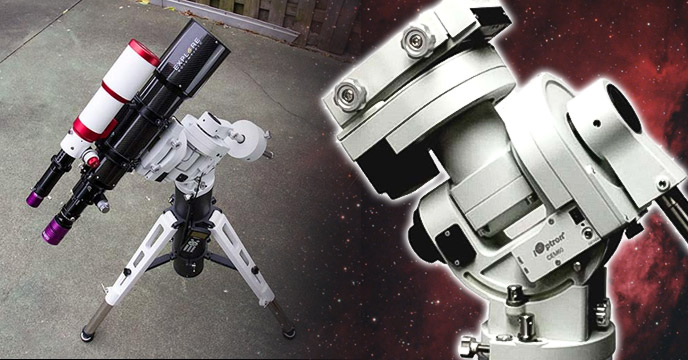
The iOptron CEM60 is a center-balanced equatorial telescope mount that provides an excellent platform for visual astronomy and astrophotography.
What makes the iOptron CEM60 computerized telescope mount so special is its impressive weight-to-payload capacity ratio and the now famous “Z-shape” design.
The design keeps the center of gravity directly over the center of the tripod (or tri-pier), giving the CEM60 natural balance. Because the center of gravity is also lower than in it is in a traditional equatorial mount design, it is also more stable.
The iOptron CEM60 with my Explore Scientific ED102 refractor and Guide Scope attached.
With the mount itself weighing in at just 27 lbs, this mount can handle a substantial payload deep-sky imaging gear of up to 60 lbs. This opens the doors to countless astrophotography telescope configurations from small refractors to larger SCT’s like the Celestron Edge HD 11.
I’ve been given an opportunity to review the iOptron CEM60, and hope to share my experiences in astrophotography along the way. This a step up from the capabilities and performance of my previous astrophotography mount, the Sky-Watcher HEQ-5 Pro.
In this post, I’ll do my best to explain why a larger equatorial mount with a heavy payload rating gives you more options and better tracking performance.
Related Post: Best Astrophotography Mounts (2024)
CEM60 Astrophotography Mount Specs:
- Maximum Payload Capacity: 60 lb(27.2kg)
- Mount weight: 27 lb (12.3kg)
- Material: All metal (except GPS cover)
- PEC: PPEC
- Counterweight: 21 lb (9.5 kg)
- Power requirement: 12V DC 2A
- AC adapter: 100V ~ 240V (included)
- Polar Scope: AccuAlign TM dark field illuminated
- Level indicator: Integrated Bubble Level
- Dovetail saddle: 8” Losmandy/Vixen dual saddle
- Hand Controller: Go2Nova®
- Autoguide port: ST-4
- Communication port: Serial port
- PC computer control: Yes (ASCOM)
iOptron CEM60 Quick Start Guide (PDF)
Those looking to mount heavier telescopes such as large refractors, SCT’s and Newtonians will have plenty of extra payload capacity space for all of your camera gear, guide scopes, and additional accessories. Even at a conservative total payload weight of 50 pounds, you can really load the CEM60 up.
If you need even more carrying capacity, the CEM120 is always an option. For my needs, the big CEM60 was more than enough.
Mounting the CEM60 EQ mount head to the tri-pier in my backyard.
The iOptron CEM40 is another choice to consider for those looking for the features of an iOptron equatorial mount, that do not need as much carrying capacity. The CEM40 can handle up to 40-pounds of astrophotography gear.
This version includes the iPolar polar alignment device built-in.
The iOptron CEM40.
iOptron CEM60 Review
The early feedback I have received from current owners of the CEM60 has been positive. Aside from its impressive specs, this iOptron mount has developed a reputation for smooth tracking and precise autoguiding. This trait is exemplified by the way of a steady autoguiding graph in PHD2 Guiding.
To be clear, this is not the CEM60-EC (the newer model with high precision encoders). Have a look at the iOptron CEM60 in the backyard as I talk about some of the cool features and astrophotography potential of this mount.
Because this video was recorded when I first received the mount, it is only a basic overview of the specs and my expectations. For a detailed unboxing of the CEM60 and the setup process, check out this video shared by Astro Jeff.
Overview and Astrophotography Results
For the best possible stability, I’ve got the CEM60 mounted to the Tri-Pier with stainless steel leg extensions and built-in vibration suspension pads. The tri-pier is an added accessory that caters to several other iOptrons mounts. The standard 2″ iOptron tripod would also do a fine job at mounting the CEM60, but many people opt for the ultra-stable tri-pier for a mount of this capacity.
In fact, when I traveled to the Cherry Springs Star Party (CSSP) in 2018, there were 3 iOptron CEM60 mounts in my immediate area (with even more across the field), and all of them had the robust tri-pier platform. The tri-pier is nice because you can easily adjust the center column height to accommodate longer telescope systems like a big refractor.
The tri-pier has an impressive overall load capacity of 220 lbs. It locks into place securely using the clamps on the side of the center column, for an ultra-stable imaging platform.
For those thinking about bringing a big equatorial mount like this on the road to a star party, I think you’ll find the experience to be surprisingly painless. For my imaging session at the CSSP, I mounted a heavy Explore Scientific ED140 APO refractor to the EQ mount, and took some incredible images of the Trifid Nebula under Bortle Scale Class 2 skies.
Setting the iOptron CEM60 and tri-pier up at a star party.
The Trifid Nebula. ZWO ASI294MC Pro and Explore Scientific ED140 on the CEM60 mount.
Fans of the electronic polarscopes such as the QHY Polemaster may want to add an iOptron iPolar device to their CEM60. Once you get over the initial headaches of installing the software on your computer, you should find the iPolar to be a useful tool to polar align the iOptron CEM60 without having to get down on the ground and look through the illuminated reticle in the polar axis of the mount.
The iPolar fits many iOptron mounts, including the CEM60.
Impressive Features
The center balanced design of this astrophotography mount is hard to overlook. This is a new design concept from iOptron, that promises to deliver better balance. With an even distribution of weight being so crucial for a successful deep-sky imaging session, this is a welcome feature for backyard astrophotographers.
I was able to balance my imaging rig quite quickly using the included 21 lb counterweight. My lightweight carbon fiber telescope, guidescope, and all camera accessories move effortlessly on the CEM60, with lots of room to spare.
The center balanced design of the iOptron CEM60 makes the mount lighter. You will be hard-pressed to find an equatorial mount with this payload rating that weighs less than the CEM60 (27 lbs). Also, the polar axis of the mount is always open and accessible, without being obstructed by the declination shaft.
I like the idea of being able to visually confirm my Polar alignment at any point during my imaging session without having to turn the declination axis of the mount (as I do on my Sky-Watcher mounts).
Compared to the Sky-Watcher SynScan hand controller I was used to, I found the iOptron Go2Nova system to be a big improvement. My first night out, I was able to successfully complete the star alignment procedure, and slew to my object of choice.
The mount is very quiet, even when slewing at maximum speed.
The patent-pending non-contact magnetically loaded gear system is something that needs to be experienced to be appreciated. With gear switches on both the R.A. and DEC axes, balancing your astrophotography equipment on the iOptron CEM60 is smooth and secure. When you’ve disengaged the gear switch, you’ll know it.
An Equatorial Mount for Astrophotography
For deep-sky astrophotography, the advantages of an equatorial mount over an Alt-Azimuth mount (such as the Celestron Nexstar 8SE), are that a polar-aligned equatorial mount can track an object without field rotation. An Alt-Azimuth mount may make locating objects easier (great for visual use), but the field would rotate around the object due to the misalignment of the axes.
The iOptron CEM60 will no doubt be used more by astrophotography enthusiasts than the casual visual observer. Features like permanent periodic error correction (PPEC) can only be fully appreciated when taking long-exposure photographs with a DSLR or CCD camera.
My backyard is a latitude of 43° N, which means that a Polar Alignment at the angle below is needed for astrophotography.
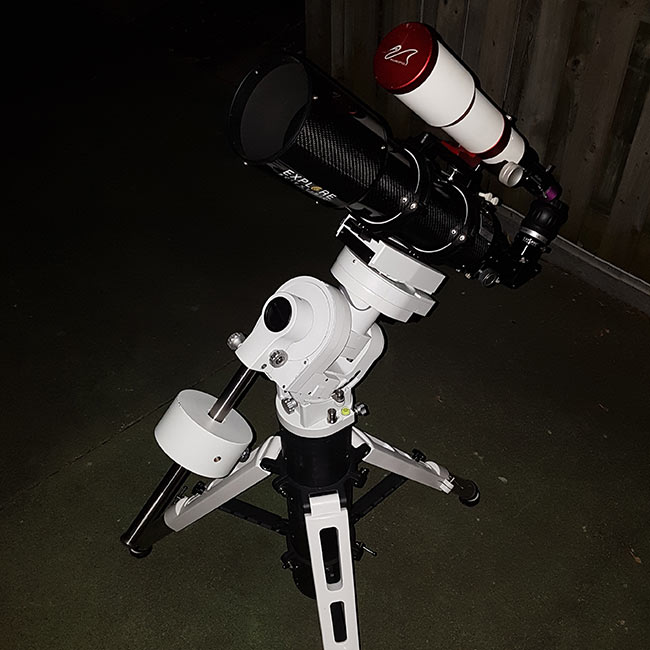
Deep-Sky Imaging Performance
Over the coming weeks and months, I will put this astrophotography mount to the test. I will shoot long exposure (3-5 minute subs) images of some beautiful fall and winter targets. I will take advantage of the autoguiding features of the CEM60, and monitor any improvements over my previous equatorial mount.
This time around, I’ll also connect the mount to my PC via ASCOM to control the CEM60 using a Planetarium software. This is an exciting time, as I hope to control the mount remotely from inside the house for the first time.
Update: I have taken countless amazing deep-sky astrophotography images with the iOptron CEM60. Some of my best images to date, in fact. I took all of the pictures with the iOptron CEM60 using a ZWO ASI294MC Pro color camera.
Here are a few images I managed to collect with the CEM60:
The Pelican Nebula. ZWO ASI294MC Pro and William Optics FLT 132.
The Eagle Nebula. William Optics FLT 132 and ZWO ASI294MC Pro.
M13 Globular Cluster. Explore Scientific ED140 and ZWO ASI294MC Pro.
The iOptron CEM60 is an extremely reliable mount, and I enjoyed my time under the stars with it. To see it in action, please watch my deep-sky astrophotography walkthrough video.
What I Like About the CEM60
Overall, the iOptron CEM60 was an incredible EQ mount for astrophotography, and my experiences were nearly always positive. I spent an entire summer imaging with the CEM60, and it was by far the most impressive piece of hardware I had ever used in my backyard.
As reliable and user-friendly as the mount was overall, there were a few really cool features of the CEM60 that really stood out.
The saddle clamp is compatible with both Vixen and Losmandy dovetail mounts. Some mounts (such as my older Sky-Watcher HEQ5 and the popular Celestron Advanced VX) only allow for a v-style dovetail to be mounted, which is no good for many modern telescope mounting plates.
Thankfully the iOptron CEM60 does not disappoint in this department. The 114mm saddle mount allows you to confidently secure a large telescope and use the twin spring-loaded hand bolts to tighten it just right.
Going in, I was worried that I would not enjoy the iOptron Go2Nova system, as I have enjoyed the SynScan hand controller for so long on my Sky-Watcher mounts. However, the iOptron hand control unit was both user-friendly and reliable to use for my various imaging tasks such as three-star alignment and object slewing.
PHD2 Guiding Graph with the CEM60
On Tuesday, October 17th I captured several 2-minute exposures on the Pelican Nebula using the CEM60 astrophotography mount. As you can see in the photo below, my graph looked excellent. The improvement in autoguiding in the CEM60 over the HEQ-5 is was evident to me.
Have a look at the RMS Error section of the graph in PHD2 guiding. The Total category shows: Tot 0.40 (0.73″). Whether this statistic could be improved, or whether I would notice a difference in my images is (justifiably) debatable. Have a look at the following thread on cloudynights.com discussing RMS error.
Here is a closer look at my graph, and the settings I am using in PHD2 guiding with the iOptron CEM60. The mount is connected via the RS-232 port and the iOptron ASCOM driver. The guide scope is a William Optics Zenithstar 71 Doublet APO.
Where to find a Used CEM60
If the cost of buying an iOptron CEM60 brand new is too high, you could always buy a used model. There are a number of reputable astronomy classified sites where you may be able to find a used CEM60.
Stick to the sites that specialize in used astronomy equipment, rather than a generic classified listing. In my experience, the astronomy community takes great care of their equipment, and are happy to answer any questions you may have about the item before buying.
I suggest checking Astromart, Canada-Wide Astronomy Buy & Sell, and the classified section on Cloudy Nights. Some of the online retailers in the United States such as High Point Scientific and OPT Telescopes have dedicated “used” sections of their website.
I have seen the iOptron CEM60 come up on these sites from time to time, at a significant discount. You’ll have to be patient, and act quickly when one pops up.




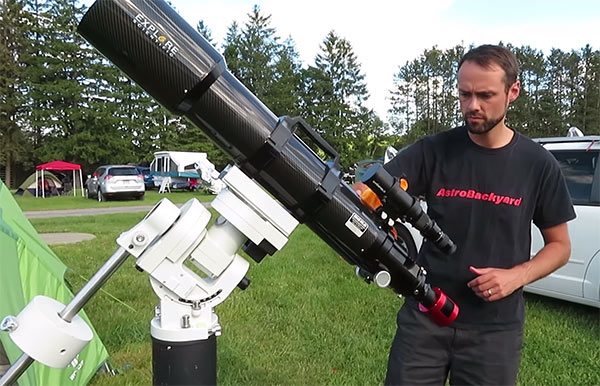
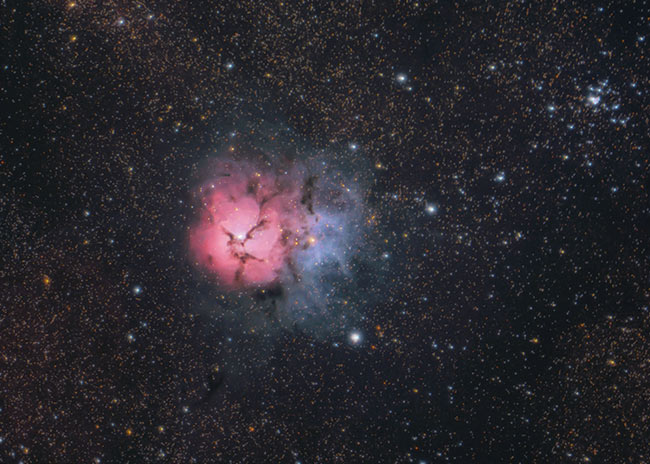

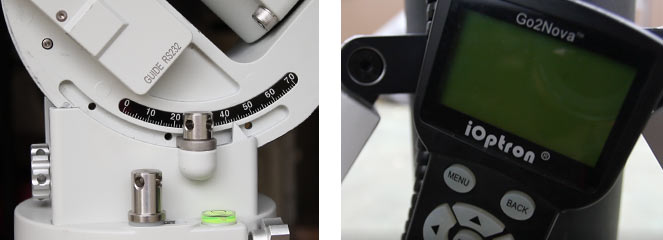
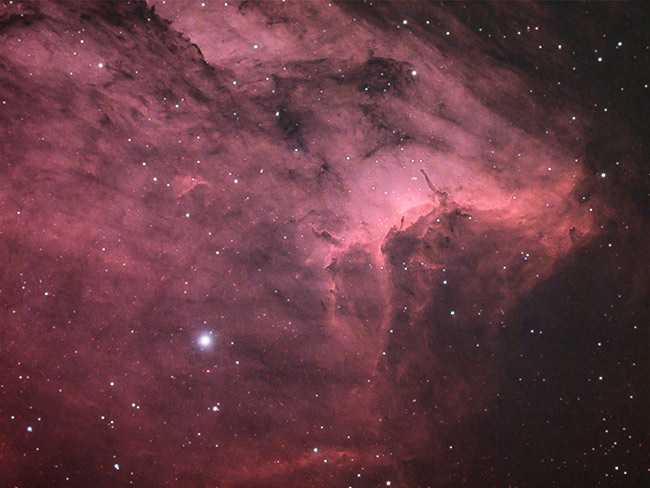
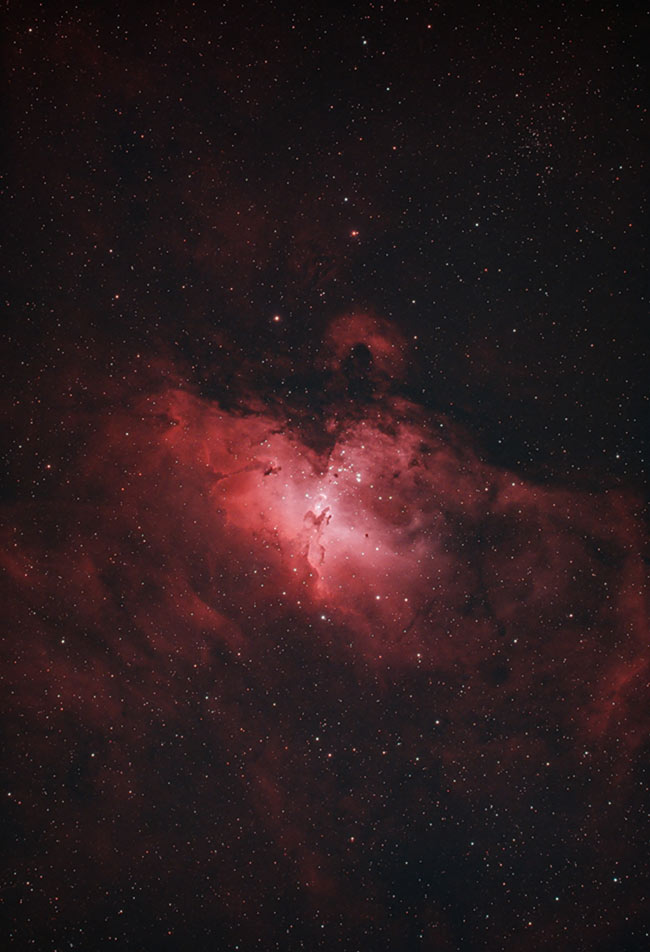
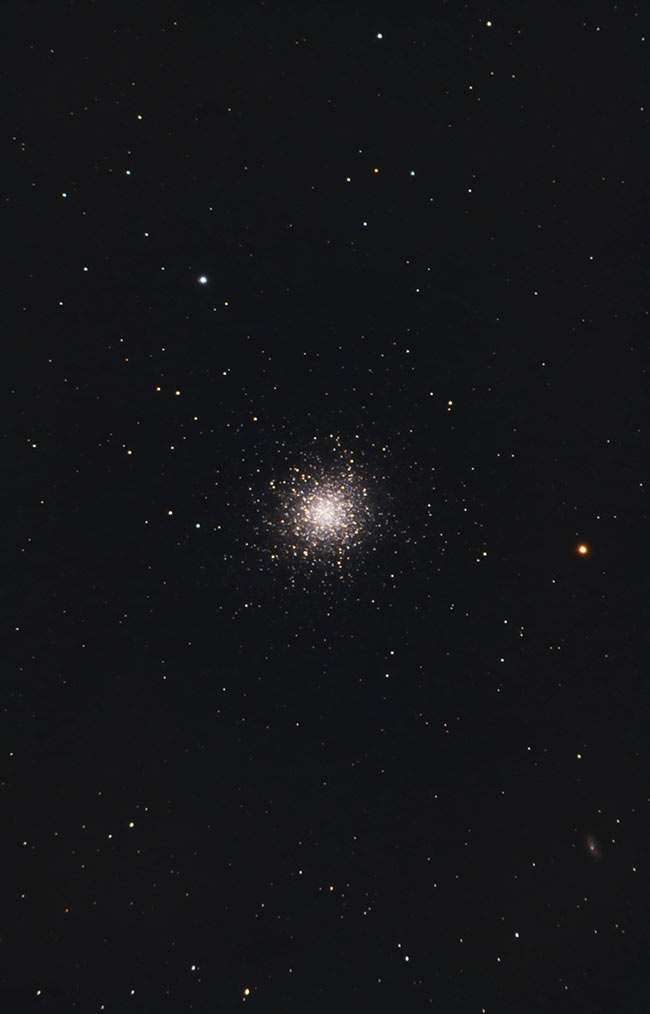
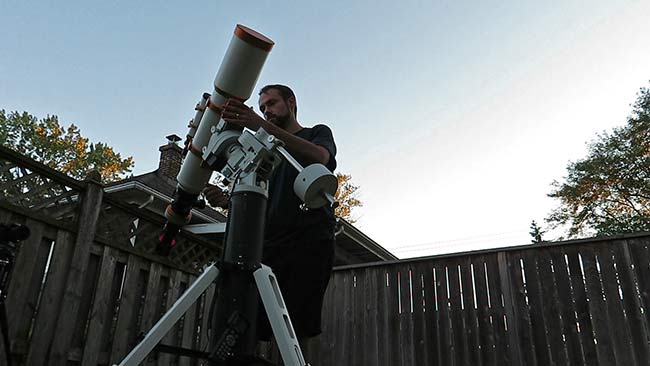
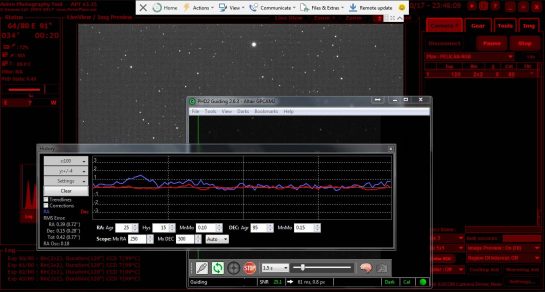



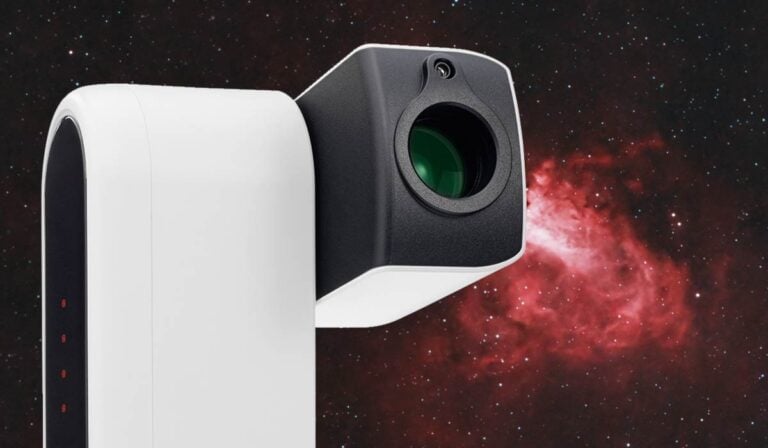
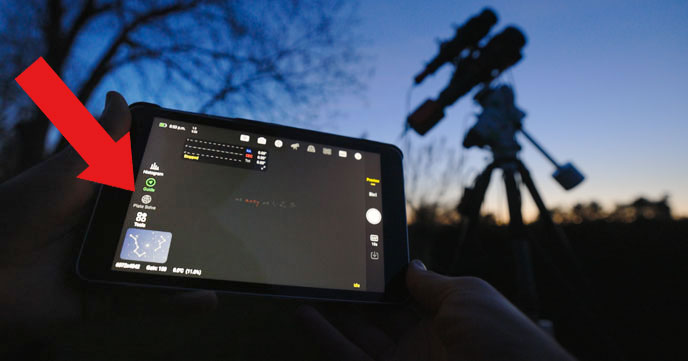


Hi
I’d really am interested in a review of the performance you’re getting from cem60 for astrophotography. Also interested in whether you control it wirelessly and which configuration and equipment allows you to control it wirelessly.
Love your channel
Hi Mike – Thank you! The weather has been bad – I actually set up the CEM60 last night for a session using the SkiFi wireless adapter. Despite a promising forecast, the clouds never broke. I’ll have some details to share on the CEM60 as soon as possible. Cheers
Hey Trevor!
I’m really curious to see whether you ultimately notice a meaningful difference in the guided tracking performance over the HEQ-5. I’m looking for a mount for an ES 102 (or similar) and the 60lb capacity of the CEM60 seems overkill for an OTA of that weight and focal length. More generally: is guiding the great equalizer when considering a mount? Cheers!
Joe – You nailed it buddy, that’s exactly what I hope to uncover myself, and anyone in our situation. With lots of real experience using the HEQ5 – I should be able to point out any noticeable improvements in tracking performance with the ED102 and CEM60. WIll do my best for a head to head comparison. And yes – great guiding can bring the best out of any mount!
That’s awesome. I think it will come down to the mount’s ability to respond to corrections, rather than the inherent accuracy of the internal gearing or PEC. Your review could save some of us hundreds of dollars!
Hi,
I recently got a CEM60 for my observatory in Brazil, my guiding results are very nice for a C8 with imaging gear on it, except for some 15 to 20 degrees around the zenith. I don’t have the privilege to use the mount daily, but I’d be thrilled to exchange some notes with you as I’m getting ready to pull the trigger on an RC10 for it, but payload is still a concern to me, not 100% it will track well at 60lbs Load…
My website is up (still work in slow progress), check it out.
Clear skies!
Sergio
Hi Trevor,
I have two Celestron mounts: a CGEM-DX and an AVX that are tuned as far as possible. The DEC guiding backlash is bad, such that guiding in PHD needs to set in one direction or off only (and PA accurate). There is also quite a bit of oscillation in RA I can’t tame down. I absolutely hate backlash and wonder if the non-EC CEM60 has precision ring and ring gears and close tolerances in the motor gear reduction. Even if the worm is precision the reduction gearing can cause a bunch of reverse-direction delay while DEC guiding…
I want to save money but maybe I need to go to a high end mount like a AP Mach1 , 10 Micron or Paramount MyT. Your experience will truly help me decide.
I have a variety of scopes including a C11 Edge HD 2800mm and a Sky-Watcher MN190 Mak Newt at 1000mm. Will the little CEM60 do the job?
Thanks for all the testing YouTube videos!
Best,
James
I just purchased the CEM25(Smaller version) can’t wait to get it this will be my first astrophotography setup of course now the forecast is cloudy : (
Congrats Wesley! I have heard great things about the CEM25 – I am sure you will get a lot of use out of it:)
Getting a used CEM60 for a decent price tmoro morning and of course its cloudy here in Massachusetts. Any recommendations on alternatives to using the following:
6in SCT with ZWO guide setup. SharpCap Pro. Photoshop. DSS/AS!3/RegiStax6
Upgrading from my AVX because I couldnt stand using it anymore and Celestron was not good with me. Plus side to owning the CEM60 is iOptron is in Methuen, MA like 45 mins from my house so if worse comes to worse I can bring the mount there and get some real life in-person help.
Clear Skies
ps. sent you a facebook add btw.!
Hi Trevor, I like your You-tube series it has helped me a lot. I am thinking of getting the cem 60 for my 12 Meade, any thoughts. Many thanks and keep up the good work. Clear skies to you.
Hi,
Am considering purchasing the CEM60. In this piece you say you will be evaluating the mount for AP, guiding, polar alignment, etc. Could you please refer me to the results of your testing?
I never thought that the process of photography would reach such a level
Hi,
I got a cem70g recently but I can’t find the correct software to use with it. What do you use? And what would you recommend?
Hi Trevor…I always enjoy the content you provide and as I read your comment ” this mount can handle a substantial payload deep-sky imaging gear of up to 60 lbs”, I’m wondering if – knowing you are doing so much astrophotography – are you truly talking an astrophotography payload?
That is, I so often hear that it is recommended to limit an AP payload to 50-60% of the mount’s rated maximum payload, which clearly then really limits one’s options unless they can afford to buy up to a higher-class mount. I’m currently working with what I regard as an overloaded Star Adventurer Pro (rated an 11-lb. max payload), but have managed to get some pretty decent results with my heavy Nikon D850/Sigma 150-600mm zoom combo that’s pushing nearly 9-lbs with other items factored in also.
As I consider my first goto mount, I want some growth room but also want to keep my costs down, so if I know the iOptron CEMs and GEMs can carry very nearly an AP payload equal to their rated payload capacity, then that is encouraging…I might be perfectly happy with a CEM40 or GEM45 for a long time, and the cost difference vs. a more robust mount such as a CEM70 could instead go toward an OTA.
Thanks!
I’m curious what tripod are you using with the CEM60, I mean the one you showin the pictures?